[ad_1]
In its most important kind, the Indian Supreme Courtroom is the custodian of the Structure of India. On this function, its major accountability is to make sure that the basic rights of residents assured beneath the Structure will not be diluted, eroded, or in any other case impinged upon by the state. It may need begun its existence as a passive courtroom, however over the a long time, it has turn into what I consider to be essentially the most highly effective courtroom amongst its friends on the earth.
This superior standing manifests itself in not less than 3 ways. Firstly, via its resolution in Keshavananda Bharati, the Courtroom assumed the ability of judicial evaluation over constitutional amendments. Secondly, via a number of choices, it assumed the ability of judicial appointments to itself and Excessive Courts. And thirdly, it expanded the basic proper to life and liberty beneath Article 21 of the Structure via guaranteeing residents distinctive and huge ranging protections, and guaranteeing the proper to method courts via public curiosity litigation.
Additionally learn | Misdirected concepts can hurt the judiciary
At its helm sits the Chief Justice of India, or the CJI. The duties and tasks that include the workplace of the CJI are unmatched by every other function within the nation. In concept, not less than, the CJI should exhibit judicial and administrative expertise of an unusually excessive order. A pattern of the tasks of the workplace embrace choosing judges for appointment to the upper judiciary, deciding the quantity and composition of benches to adjudicate on totally different sorts of instances, in addition to performing regular judicial duties. As George H. Gadbois places it, the Chief Justice ought to be ‘a reliable administrator, a shrewd decide of males and personalities, and a towering persona himself’.
However, by dint of circumstance, and to some extent by alternative, the Indian judiciary developed to observe the seniority conference in appointing the Chief Justice of India. In consequence, whereas the individuals who ultimately turn into Chief Justice could not have been appointed for exhibiting sure qualities, they’re compelled to develop these abilities on the job, and a few have achieved so with aplomb, e.g., Justice Subba Rao, Justice Venkatachaliah, and Justice J.S. Verma. Nonetheless, an unlucky fallout of the seniority conference is that Chief Justices are likely to have very brief tenures in workplace. Over 75 years, the Indian Supreme Courtroom has already had 49 Chief Justices. Justice Y.V. Chandrachud, within the Nineteen Eighties, had an exceptionally lengthy tenure of over seven years, whereas on the different excessive, Justice Ok.N. Singh occupied the workplace for a mere 17 days.
Three intervals
This huge variety of Chief Justices gives for an attention-grabbing information set to review the evolution of the workplace, and the connection of the judiciary with the chief, which may be roughly labeled into the next eras. From 1950 to 1971, the Chief Justice had full authority over judicial appointments, and the advice of the Chief Justice would at all times be adopted, even to the extent of powers of a veto.
Between 1971 and 1993, sturdy single celebration governments occupied the Centre, and the chief insisted on appointing ‘dedicated judges’ to the Supreme Courtroom, in a transparent try at courtroom packing. A number of supersessions befell, with the chief exercising prerogative in appointing Chief Justices, and the seniority conference was brazenly flouted. The shocker got here with the choice within the first judges’ case in 1981 ( SP Gupta), the place it was held that the opinion of the Chief Justice of India wouldn’t be binding on the federal government.
With the second decide’s case in 1993, and round when Justice M.N. Venkatachaliah took over because the CJI, the development reversed and the judiciary virtually wrested the ability of appointments again from the chief. Judicial primacy and the collegium’s creation occurred on this interval, and whereas the collegium has since acquired appreciable notoriety for being arbitrary and undemocratic, it nonetheless occupies the sphere right this moment.
“Once we study the evolution of the Indian Supreme Courtroom and the workplace of the CJI, it’s a basic instance of a relentless shifting and rebalancing of energy between the judiciary and the chief”
Once we study the evolution of the Indian Supreme Courtroom and the workplace of the CJI, it’s a basic instance of a relentless shifting and rebalancing of energy between the judiciary and the chief. When the chief was highly effective, normally via a single celebration majority, as with the Indira Gandhi and Rajiv Gandhi-led governments, the judiciary virtually succumbed to the chief’s management. Nonetheless, when comparatively weaker coalition governments have been elected, the judiciary restored powers to itself.
This rebalancing is enjoying out once more now. Since 2014, the chief is as soon as once more a single celebration majority beneath the Narendra Modi-led BJP authorities. Consequently, the judiciary’s powers are weaker than earlier than, and the chief is again in management. We see an increase in autocratic tendencies of the chief, via the gradual destruction of democratic establishments, the misuse of investigating companies, communal polarisation, and a gradual chipping away at constitutional protections accessible to residents, all of which a weak judiciary is unable or disinclined to sort out.
Additionally learn | A public decide with an unsure legacy
From 2014 to 2022, the eight years the Modi authorities has been in energy, eight people have occupied the workplace of the CJI, from Justice R.M. Lodha because the forty first Chief Justice to Justice N.V. Ramana because the forty eighth. This text makes an attempt to look at how their tenures have contributed to the evolution of the Courtroom and the workplace of the CJI.
The CJIs of the Modi period
Instantly earlier than the Modi authorities first got here to energy in 2014, the CJI was Justice P. Sathasivam, who, relatively sadly, selected to just accept the Governorship of Kerala virtually instantly after he demitted workplace. This uncommon and arguably irregular appointment was made with out an acceptable cooling interval, and went towards the BJP authorities’s personal coverage, with Arun Jaitley having brazenly proclaimed that giving jobs to judges upon retirement would assist governments affect courts. This additionally set a harmful precedent for future judges, that’s seen even right this moment.
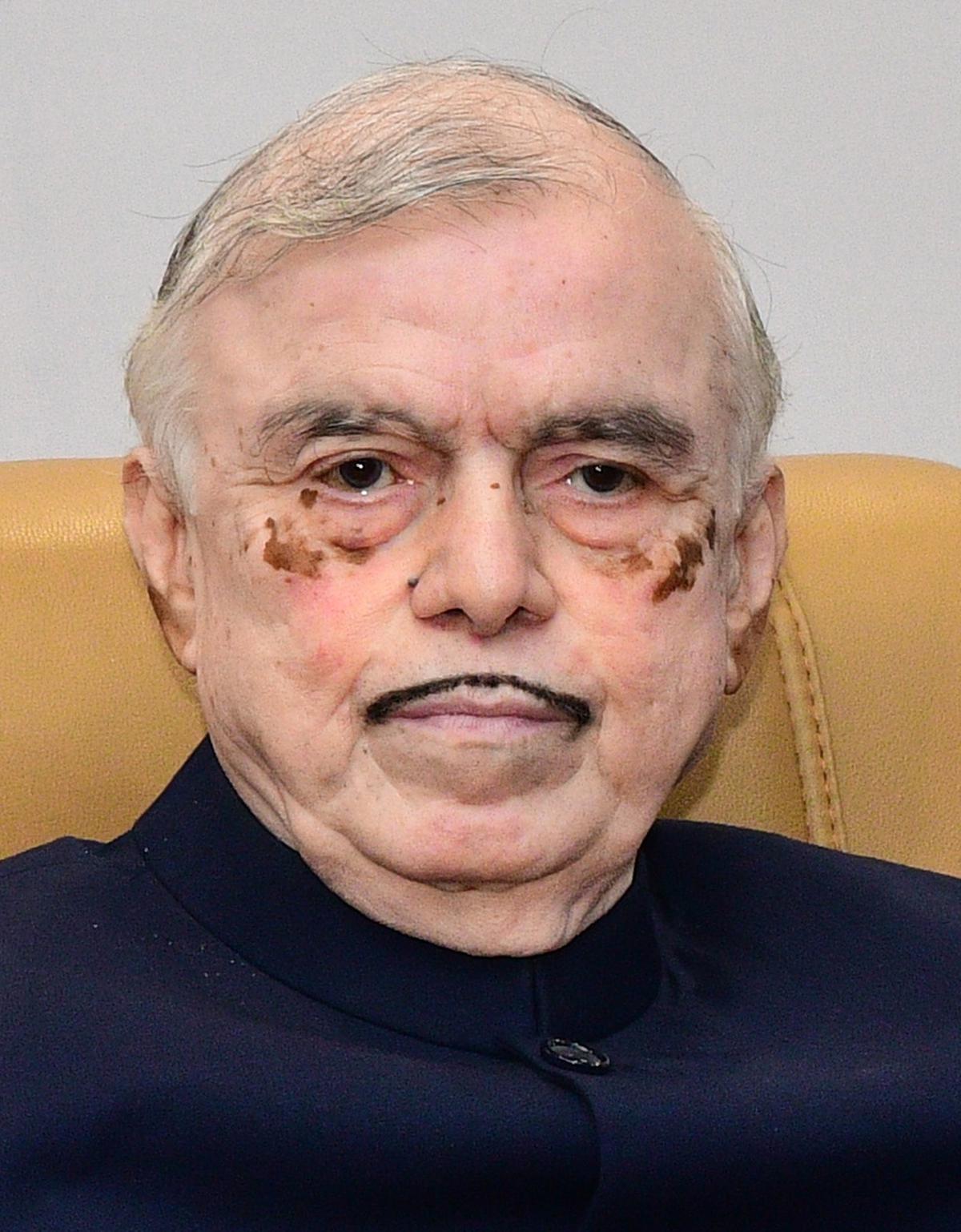
Former CJI P. Sathasivam.
| Picture Credit score: S. Siva Saravanan
What may need been perceived as a gauntlet thrown into the ring by the chief didn’t deter Justice Sathasivam’s successor, Justice R.M. Lodha, from making daring and unconventional choices of his personal. Most notably, he revived the dormant development of direct appointments from the Bar to the Bench within the Supreme Courtroom, a apply which was permitted beneath the Structure, however seldom tried. His suggestions have been largely profitable, however one was famously not, with the appointment of Gopal Subramaniam being refused by the federal government. This might have been the Modi authorities’s first confrontation with the judiciary, and Justice Lodha even later mentioned that he was open to pursuing Mr. Subramaniam’s appointment, however the lawyer himself withdrew his candidature, as a consequence of which confrontation was sidestepped. Justice Lodha turned a family identify for his report on reforms within the Board of Management for Cricket in India. Mockingly his report was subsequently fully diluted by the very Courtroom that had appointed the committee to advocate reforms within the first place.
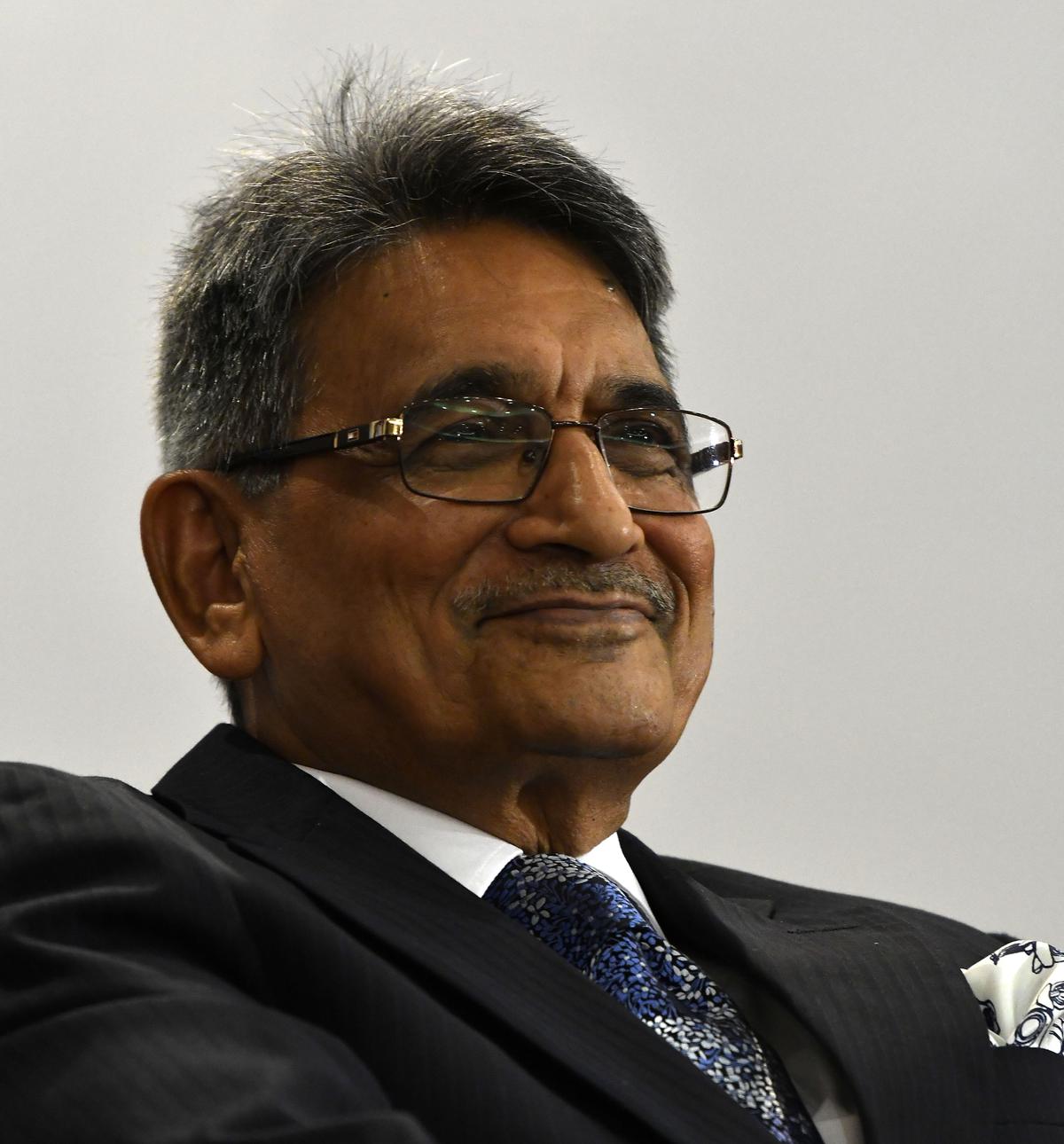
Former CJI R.M. Lodha
| Picture Credit score: Shiv Kumar Pushpakar
It was beneath Justice H.L. Dattu, who adopted Justice Lodha as CJI, that the primary main confrontation between the chief and the judiciary befell. The fourth decide’s case, in regards to the validity of the Nationwide Judicial Appointments Fee (NJAC) Act, had been referred to a 5 decide Bench, and heated arguments ensued. The judiciary stood its floor and ultimately emerged victorious, and the NJAC Act, an undoubtedly flawed laws, was struck down. Whereas the collegium is an arbitrary, secretive and undemocratic strategy of judicial appointment, and communication and transparency in its operations are greater than fascinating, the design of the NJAC as proposed was not the suitable answer. Nonetheless, the Supreme Courtroom might have fastened the issues within the NJAC Act, maybe by studying down the provisions to handle its shortcomings, however selected not to take action.
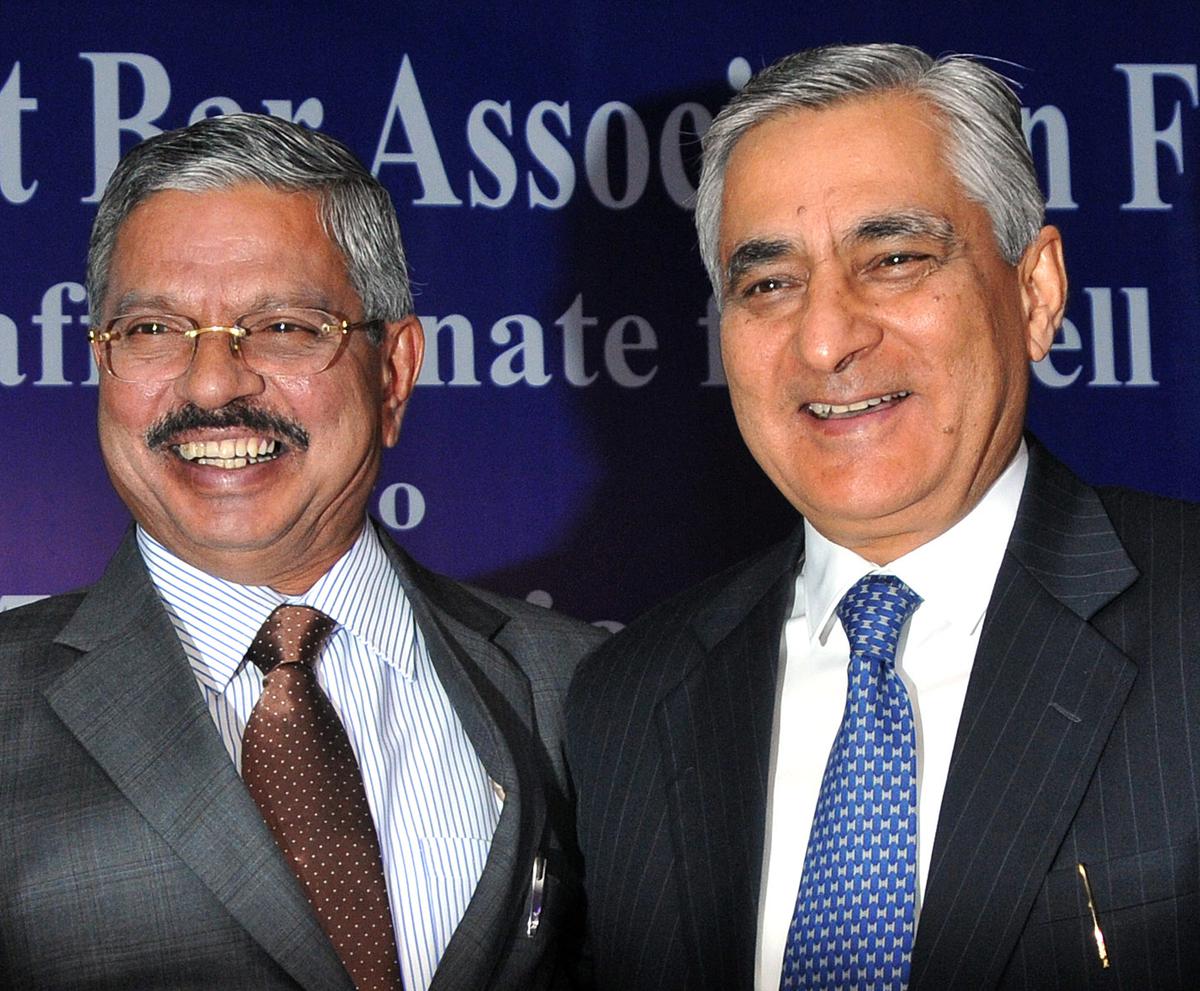
File picture of Chief Justice of India, Justice H.L. Dattu (left) with Chief Justice Designate, Justice T.S. Thakur
| Picture Credit score: Shanker Chakravarty
After the NJAC judgment, issues have been nonetheless not settled, and the memorandum of process for appointments to the upper judiciary turned the centrepiece of the dispute between the chief and the judiciary. The strain continued when Justice T.S. Thakur took over because the CJI. He was the final CJI within the Modi period to have proven some backbone in issues of judicial administration and appointments. In addition to vociferously highlighting the plight of the overburdened Indian judiciary, in a single occasion even shedding tears within the Prime Minister’s presence, Justice Thakur assiduously labored at mechanisms of filling up of vacancies, authoring an essential judgment on this regard. He set the Nationwide Judicial Information Grid rolling, which right this moment connects all ranges of the judicial system and gives a surfeit of data to litigants.
However his reform efforts took a controversial flip when he tried about 20 transfers of judges throughout Excessive Courts. He was not the primary decide to try such large-scale transfers; Justice Venkatachaliah and Justice S.H. Kapadia had tried this too, however their motivations for the transfers weren’t at all times unambiguous, and their experiments arguably failed, with many transferred judges being repatriated. Authorized students and even former judges have lamented that such transfers are akin to treating judges like civil servants, and are a grave menace to the independence and general integrity of the judiciary. A few of Justice Thakur’s switch orders have been evidently unhealthy calls, and have been reversed quickly sufficient.
Sadly, transfers proceed until date, many being arbitrary and unjustified, and following no documented coverage. However his swipes at controversy, Justice Thakur was additionally the final Chief Justice to actually stand as much as the federal government. Up till right here, the Supreme Courtroom had stood its floor whereas confronting the chief. After this, issues modified fully.
India’s first CJI from the Sikh group, Justice J.S. Khehar, had a brief tenure of lower than eight months, by which he was celebration to many landmark judgments, together with the Proper to Privateness and Triple Talaq judgments. Justice Khehar’s time period additionally revived debates on the shortage of transparency and equity in managing the roster within the Supreme Courtroom, a problem that spanned the tenures of a number of CJIs thereafter.
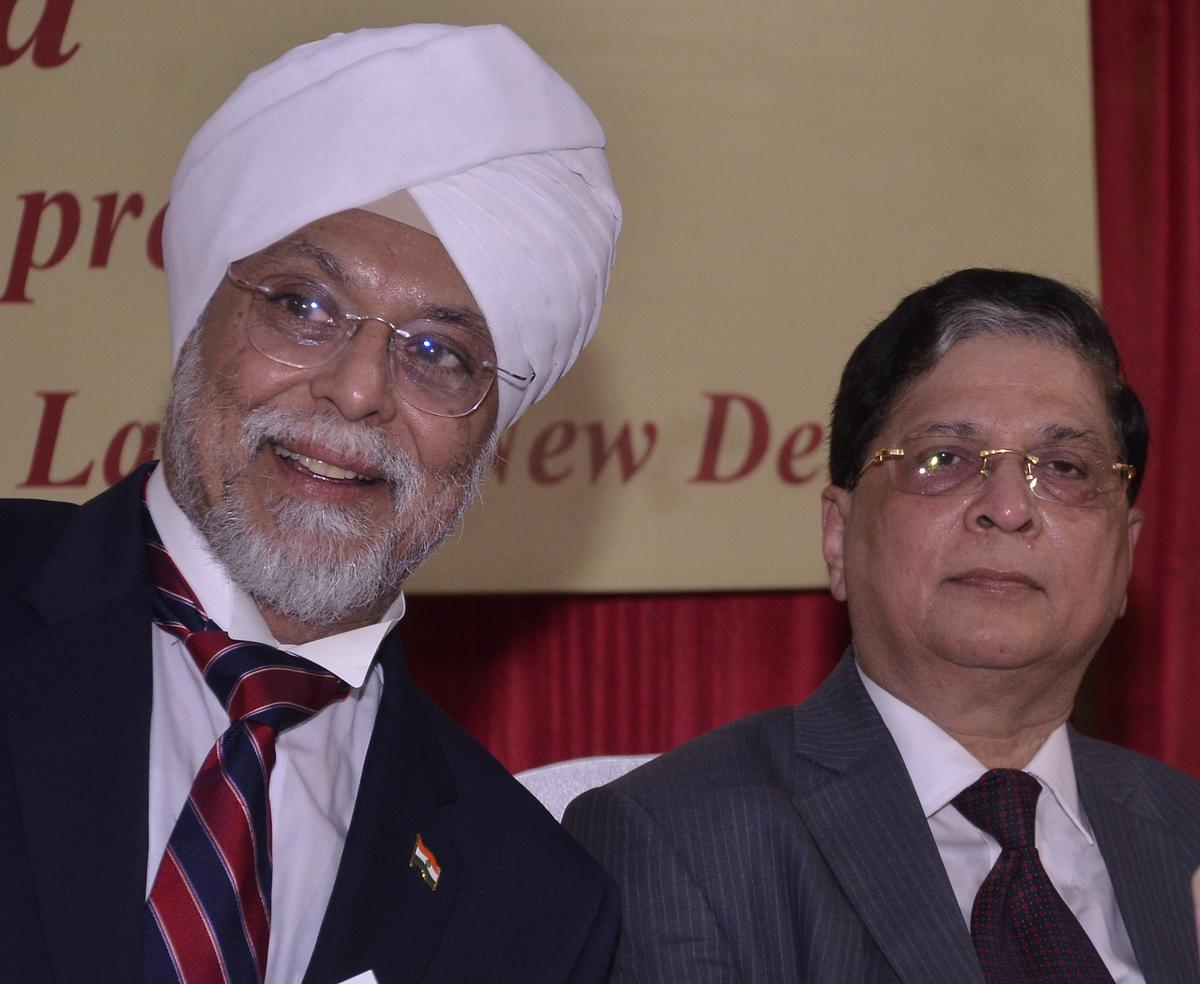
Chief Justice of India J.S. Khehar in dialog with Chief Justice designate Dipak Misra.
| Picture Credit score: Shiv Kumar Pushpakar
Sure unproven allegations in a suicide be aware by Kalikho Pul, a former Chief Minister of Arunachal Pradesh, directed at a number of judges, together with Justice Khehar himself, got here to the Courtroom’s consideration. With out dwelling on the veracity of the allegations, the process Justice Khehar adopted was with out precedent and likewise with out propriety. The Supreme Courtroom, in its personal resolution in Veeraswami, had mentioned that legal proceedings towards somebody within the greater judiciary might solely be initiated in session with the CJI. Additional, if allegations have been made towards the CJI immediately, permission could need to be sought from different Supreme Courtroom judges. Mr. Pul’s spouse wrote to Justice Khehar looking for permission to file an FIR towards the judges talked about within the be aware. Regardless of being named himself, the CJI, of his personal accord, flouting all considerations of battle of curiosity, selected to listing the letter as a writ petition (changing an administrative query right into a judicial one). Critically, this demonstrated an entire disregard of primary ideas of pure justice, and set an instance for others to observe.
The opposite controversial improvement throughout Justice Khehar’s tenure was the conviction and subsequent imprisonment of a Excessive Courtroom decide, Justice C.S. Karnan, for contempt of courtroom. In addition to criticising the Courtroom’s train of its disciplinary powers and contempt jurisdiction, many additionally deemed the choice unconstitutional for overlooking Parliament’s unique privilege to take away a member of the upper judiciary in an act. The basis downside of judicial appointments was ignored, as additionally the query of how sure judges might enter the upper judiciary with out satisfactory scrutiny.
The following CJI was Justice Dipak Misra, whose tenure is remembered for the unprecedented press convention held by his 4 fellow judges, condemning the CJI’s inner administrative choices, particularly that courtroom conventions of bench power and bench composition within the allocation of instances weren’t being adopted, and that the CJI had selectively assigned, with none rational foundation, essential instances to preferential benches. The set off was the Brijgopal Harkishan Loya case, the conspiracy theories surrounding his dying, and the choice to allocate the matter to a sure Bench opposite to roster and conference.
The problem of the grasp of roster and battle of curiosity additionally emerged. A Bench led by Justice Misra was listening to a murky CBI case pertaining to bribery round admissions in a debarred medical faculty, which additionally concerned allegations of makes an attempt to bribe sitting Excessive Courtroom and Supreme Courtroom judges. Separate petitions sought a court-regulated investigation on this case, with a request to listing this matter earlier than a Bench aside from the CJI’s Bench, for causes of battle of curiosity. As an alternative of sitting out the case, as propriety and customary sense would have demanded, Justice Misra selected to listen to these petitions himself, even adjudicating on the scope of the powers of the CJI himself. Finally, after a number of twists and turns, the petitions have been dismissed with heavy fines, however the debate round battle of curiosity inside the judiciary was solely getting extra accentuated.
He was additionally the primary CJI towards whom an impeachment movement was proceeded towards, though it was ultimately quashed by the Rajya Sabha. Regardless of these controversies, Justice Misra managed to arrange the utmost variety of constitutional benches as CJI and strove always to realize a stability between adjudication and disposal.
The following CJI, Justice Ranjan Gogoi, additionally had a controversial tenure. He had been a celebration to the press convention earlier, and had famously additionally inspired “noisy judges” to be extra questioning of the system. Nonetheless, absolutely the disregard of battle of curiosity took its most distinguished flip in his tenure, when Justice Gogoi sat within the listening to (though he didn’t signal the order) of a sexual harassment criticism made by an worker of the Supreme Courtroom towards himself. All ideas of pure justice have been damaged in dealing with this criticism. In addition to the CJI himself constituting a committee for inspecting the fees, the committee report exonerating the CJI was additionally not disclosed to the complainant, not to mention the general public at massive. Her grievance was additionally about unfair dismissal and victimisation, which appears to haven’t been addressed by the committee. A lot later, she was reinstated in service beneath the subsequent CJI Bobde.
Former Chief Justice of India (CJI) Ranjan Gogoi.
| Picture Credit score: Shiv Kumar Pushpakar
Justice Gogoi was additionally obsessive about secrecy, and routinely requested for data to be submitted to the courtroom in ‘sealed covers’ (this has since been discontinued with Justice D.Y. Chandrachud’s order denouncing the apply.) This was employed in instances such because the Assam’s Nationwide Register of Residents (NRC) matter, the Rafale dispute, the electoral bonds problem, and so forth. Within the NRC case, the style by which the judiciary took over the chief’s function, leaving the citizenship rights of hundreds of thousands beneath cloud, led commentators to time period this because the rise of the ‘government courtroom’. His therapy of habeas corpus petitions filed from Jammu & Kashmir within the wake of the abrogation of Article 370 prompted an eminent lawyer to say that the “Gogoi Courtroom has, at reckless pace, run a coach-and-four via the centuries-old established legislation on habeas corpus.” In his tenure, the apply of what some authorized students describe as ‘judicial evasion’ additionally grew; the Supreme Courtroom would keep away from listening to sure instances altogether, particularly these of utmost significance to the nation, such because the electoral bonds case, the Citizenship Modification Act case, the abrogation of Article 370, and so forth., or would sit on such instances with out passing any orders of consequence.
Justice Gogoi additionally accepted an appointment as a Member of Parliament (Rajya Sabha) quickly after retirement, and fears expressed on the time of Justice Sathasivam’s put up retirement appointment resurfaced of elevated government and legislative interference in issues of the judiciary. Already, there was a rising deferential angle within the judiciary in the direction of the chief. Disturbingly, at about the identical time, there was additionally a bent in the direction of sycophancy that began amongst Supreme Courtroom judges, with Justice Arun Mishra and Justice M.R. Shah showering praises on the Prime Minister publicly. Justice Gogoi’s Bench concluded the long-standing Ayodhya dispute, however there seems to be no finish in sight to finish communal strife, with Gyanvapi, and even perhaps Kashi and Mathura to observe.
Justice Gogoi was adopted by Justice Sharad A. Bobde as CJI, who had the longest tenure within the Modi period, clocking in a little bit over one yr and 5 months. Whereas that gave a chance to boldly experiment with know-how within the judiciary, it additionally led to higher subservience on the a part of the judiciary in the direction of the federal government. The apply of judicial evasion that started beneath Justice Gogoi continued in his time period. This era additionally noticed the Courtroom give preferential therapy to sure issues, for instance, within the bail issues of journalists Siddique Kappan versus Arnab Goswami.
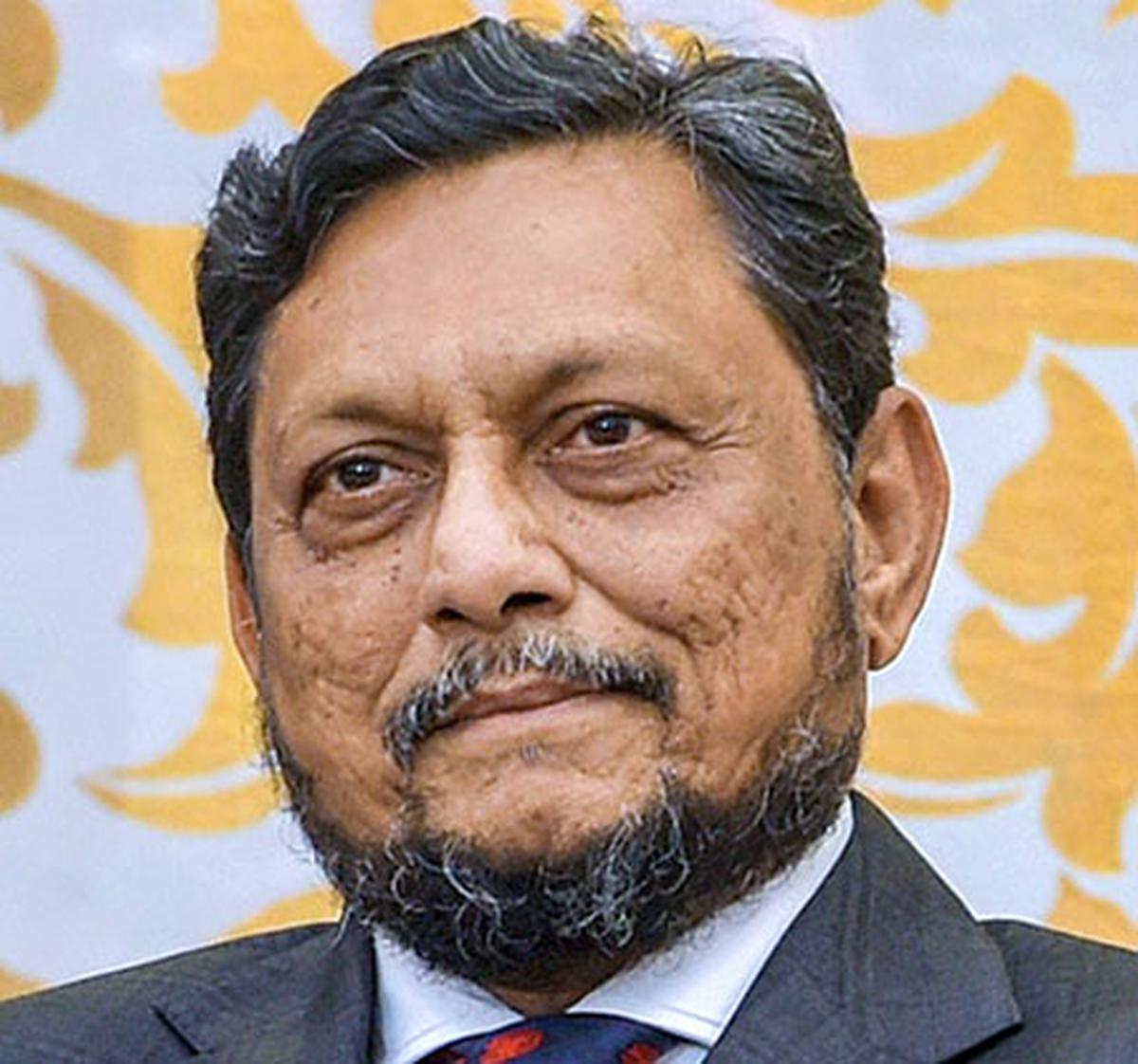
Former CJI Justice Sharad Arvind Bobde.
| Picture Credit score: PTI
CJI Bobde’s Bench, in an unprecedented order, additionally stayed the controversial farm legal guidelines, and appointed a committee to look at the difficulty comprising people who had already publicly supported the legal guidelines themselves. Justice Bobde can even be remembered for his vocal displeasure of using Article 32 petitions as a method of approaching the courtroom, as additionally trying to remove the proper to adjudicate on COVID instances from Excessive Courts. The unhappy plight of migrant labourers in India throughout the pandemic was a tragedy, and the Supreme Courtroom’s angle in the direction of the scenario mirrored the ivory towers it had constructed for itself.
Regardless of these controversial choices, Justice Bobde made an try at judicial reform by issuing pointers on the appointment of ad-hoc judges to sort out judicial pendency. It is usually notable that in his time period, not a single appointment was made to the Supreme Courtroom. Justice Bobde was reluctant to advocate Justice Akil Kureshi to the Supreme Courtroom, a revered senior Excessive Courtroom Chief Justice, who had by the way additionally issued an order towards a excessive functionary of the federal government. Alternatively, Justice Nariman was insistent on recommending his identify. This led to a standoff inside the collegium, and speaks volumes concerning the so-called independence of the collegium.
The newest Chief Justice to have accomplished his time period in workplace on this interval is Justice N.V. Ramana. Justice Ramana has been essentially the most publicly seen face of the Supreme Courtroom within the trendy period. In addition to delivering speeches and fascinating with the general public at massive throughout the nation, Justice Ramana has additionally introduced again a number of the previous glory of the Supreme Courtroom. The establishment appears to be the ‘sentinel on the qui vive’ as soon as once more. Public confidence within the judiciary has additionally improved with sure bail orders and stays (e.g., sedition), and the Pegasus inquiry.
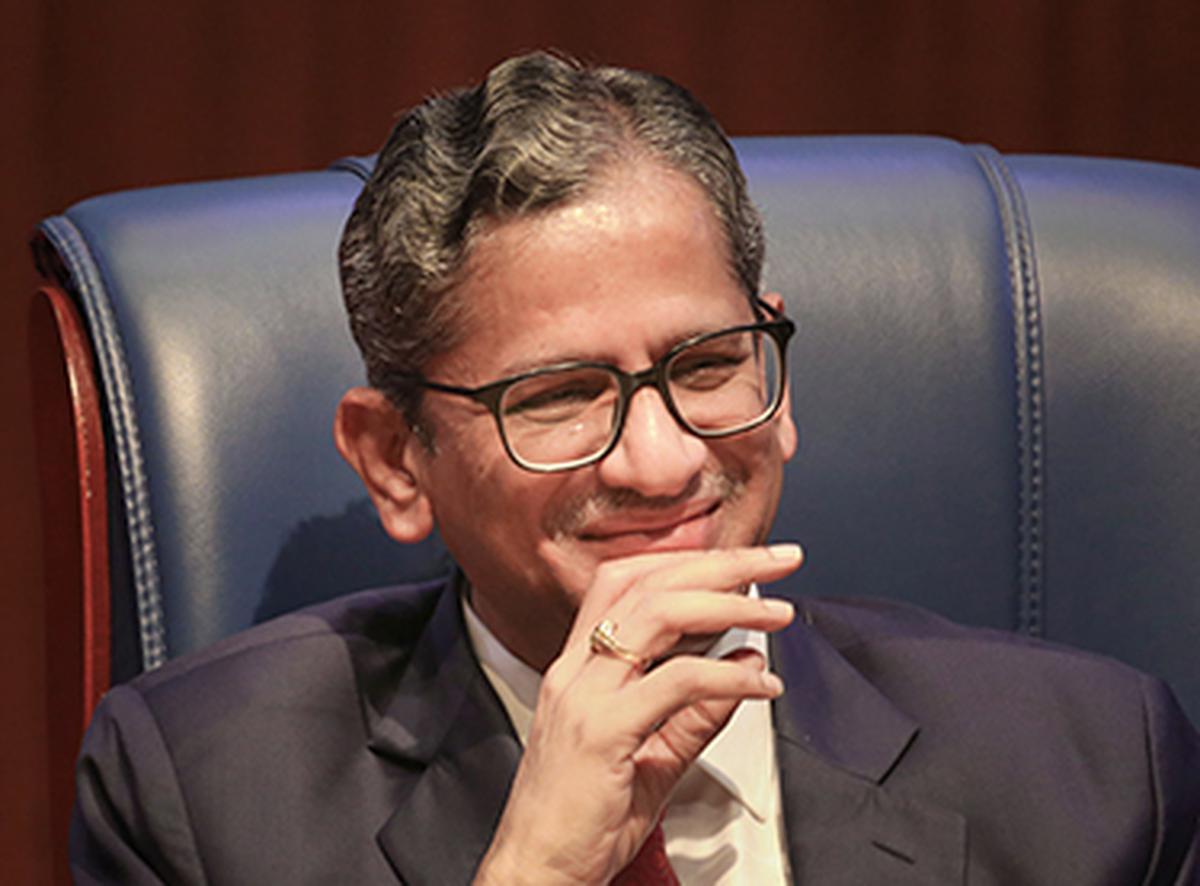
Former Chief Justice of India N.V. Ramana.
| Picture Credit score: PTI
That mentioned, his tenure has additionally seen some judgments from his affiliate judges critically undermining civil liberties. The choice on the Prevention of Cash Laundering Act, which was in the identical vein because the Courtroom’s earlier resolution within the Illegal Actions (Prevention) Act (the Watali case), had the impact of nearly detaining individuals for an indefinite interval, comparable solely to the ADM Jabalpur case. The Teesta Setalvad/Zakia Jafri and Himanshu Kumar instances additionally occurred on his watch, seeming as if the Supreme Courtroom was criminalising petitioners who dared to method the Courtroom on civil liberty issues
It’s pertinent to notice that Justice Ramana additionally crammed up all posts within the Supreme Courtroom and made a considerably massive variety of appointments within the greater judiciary, together with appointing many ladies judges, in a direct transfer to enhance the variety within the system. Sadly, the apply of judicial evasion continued in Justice Ramana’s time period, and no constitutional Benches have been shaped, and neither have been essential issues taken up.
The long run
The Supreme Courtroom right this moment is headed by the forty ninth Chief Justice of India, Justice U.U. Lalit, who could have a tenure of lower than three months. Though it’s too early to make any substantial remarks on his tenure, within the brief time that he has been in workplace, Justice Lalit has already proven that the registry may be reformed via enhancing processes of submitting and itemizing of instances. He has additionally taken initiatives within the formation of benches and sure preliminary orders that he has given, e.g., within the Kappan and Setalvad instances, granting bail to people the place the unique indictment itself was with out foundation. All these developments maintain promise for the judiciary, and there may be hope that the Supreme Courtroom will dwell as much as its capabilities of being the true custodian of the Structure and protector of elementary rights that it was as soon as meant to be.
“Within the coming a long time, the Supreme Courtroom will proceed to face challenges from a number of fronts, significantly the chief”
Within the coming a long time, the Supreme Courtroom will proceed to face challenges from a number of fronts, significantly the chief. It’ll even have newer tasks of strengthening the Indian judiciary, particularly the decrease courts, which appear to have faltered in current instances in lots of respects. A dynamic and considerate management, supported by puisne judges, ought to be capable of be certain that these challenges and tasks are met appropriately. The Supreme Courtroom of India, as additionally the workplace of the CJI, will proceed to evolve, however hopefully, they are going to achieve this in the proper path.
Ajit Prakash Shah is Former Chief Justice, Delhi Excessive Courtroom and Former Chairperson, Legislation Fee of India
[ad_2]
Supply hyperlink